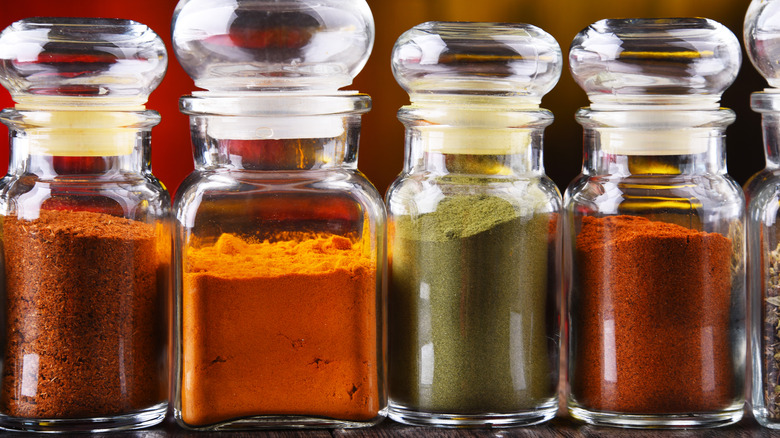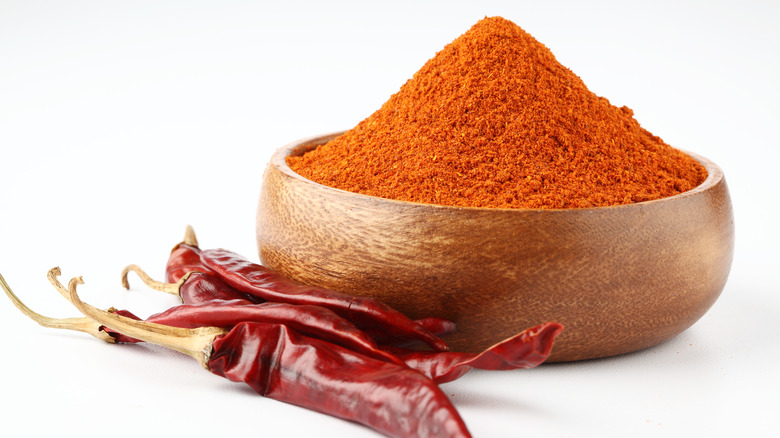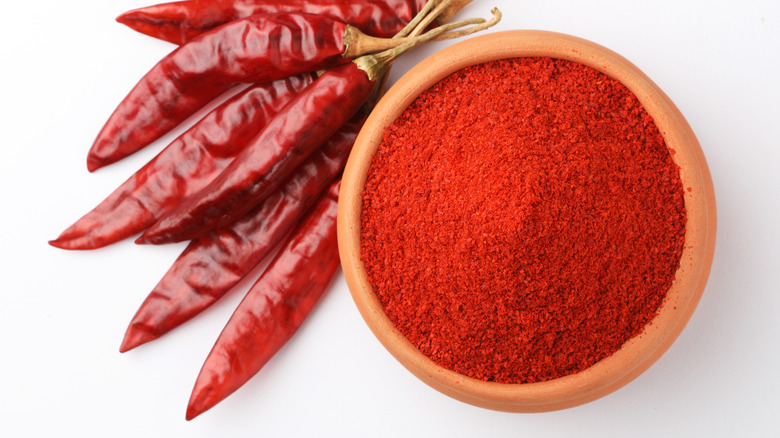There's A Vast Difference Between Chili Powder And Chile Powder
Chili powder and chile powder: They're both peppery spices found in the same grocery store aisle, so how different can they be? Well, it turns out that you might not want to mix them up or substitute them for each other.
Chili powder and chile powder may sound a lot alike, but there are several clear distinctions between them. Yes, they can both infuse any dish with a kick of extra heat, but that just may be where the similarities between the two pepper-based spices end. Make sure that the next time you shop for spices, you check the labels on the bottles before you absentmindedly grab one and later realize it's the wrong type of seasoning. Fortunately, though, we're here to give you the low-down on the differences between the two so that you can add the right type of heat to your favorite dishes.
The difference between chili powder and chile powder
The differences between chili powder and chile powder may seem insignificant at first, but they can show you which is best to put in some of your favorite dishes. Both are dried, ground pepper; however, chili powder and chile powder have slightly different pepper compositions.
Chili powder is a dried, ground mixture of at least one type of pepper along with a variety of other ingredients for flavor. Common ingredient pairings with the peppers include garlic powder, onion powder, paprika, cumin, and oregano, among others.
By contrast, chile powder is dried and ground as well, but it contains chile peppers and only chile peppers. Typically, chile powder only has one type of pepper per container, but the types of peppers can vary. Chile powders are commonly made of certain types of chiles, like cayenne chiles and ancho chiles.
It's important to read the ingredient labels on both chili powders and chile powders so that you know exactly what your meals and snacks will taste like when you add them.
How to know when to use chili powder vs. chile powder
If chili powder and chile powder are so different, how can you know when to use each? Paying attention to the recipes you use is an important first step, but there's also a simpler way to decide which is the best spice for each dish.
Keep in mind that chili powder has additives that aren't peppers, and know exactly which combination of spices and herbs you'll find in the brand you buy. This way, you'll be able to decide whether or not the flavors in your chili powder will overpower the other ingredients, and you can decide to leave it out altogether if some of the spices and herbs don't complement your dish.
To decide whether or not to use chile powder, the process is also simple — know which type of pepper the chile powder is made up of. If a recipe calls for ancho chile powder, for instance, make sure to have it on hand because the subtle variations in chile powders can make a big difference when you cook. If you have more than one type of chile powder in your kitchen, separate them out or keep track of where you put them so that you don't accidentally choose the wrong one.


